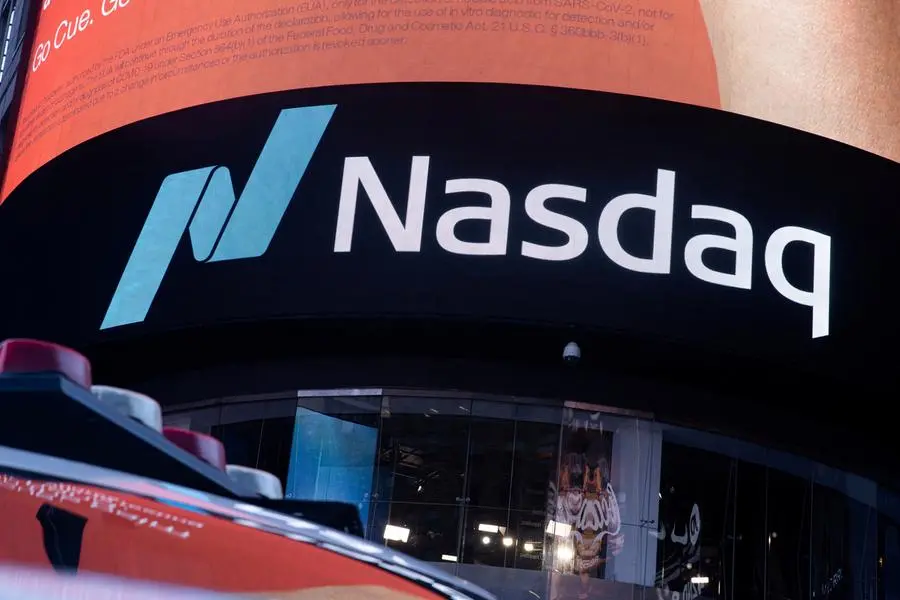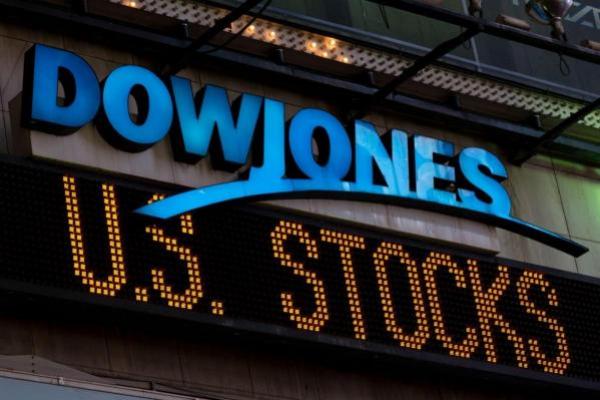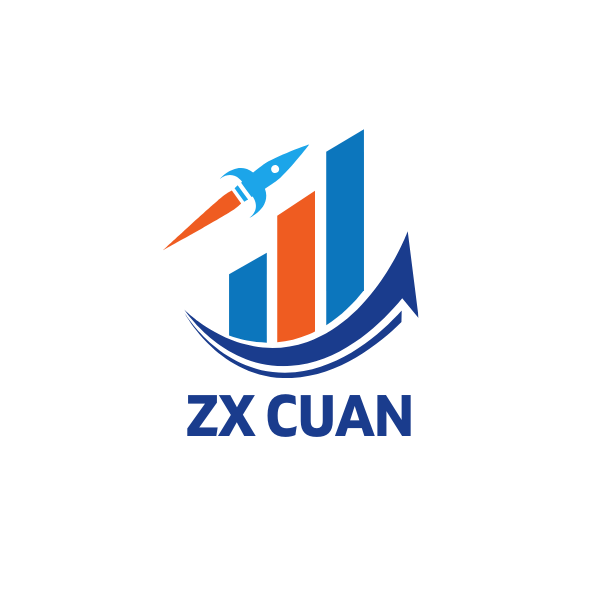When you hear about the stock market on the news, two major names often come up: NASDAQ and the Dow Jones Industrial Average (DJIA). These two stock indices are some of the most well-known in the world, but they are very different in how they operate, what they represent, and how they affect the market.
In this article, we’ll break down everything you need to know about NASDAQ and the Dow Jones. Whether you’re an investor looking to expand your knowledge or just curious about these indices, we’ve got you covered.
What is the NASDAQ?

The NASDAQ (National Association of Securities Dealers Automated Quotations) is both a stock exchange and an index that represents the performance of technology and growth-oriented stocks.
It started as an electronic exchange in 1971, which was revolutionary at the time because it was the first to fully automate trading. This meant that, unlike other exchanges that relied on trading floors with human brokers, NASDAQ allowed transactions to take place entirely through computer systems. Over the years, it has grown to become one of the largest exchanges in the world by market capitalization.
NASDAQ-100 Index
While the NASDAQ is the name of the stock exchange, most people are actually referring to the NASDAQ-100, which is the index that tracks the performance of the largest 100 companies listed on the exchange. These companies are primarily in the technology, consumer services, and healthcare sectors.
Some of the largest companies in the NASDAQ-100 include:
- Apple (AAPL)
- Microsoft (MSFT)
- Amazon (AMZN)
- Tesla (TSLA)
- NVIDIA (NVDA)
These companies are known for their growth potential, meaning that their stock prices are expected to rise as they expand their businesses and innovate. Because of this focus on tech and growth stocks, NASDAQ has earned a reputation for being more volatile and for delivering higher returns over the long term compared to other indices.
What is the Dow Jones?

The Dow Jones Industrial Average (DJIA) is one of the oldest and most recognized stock market indices in the world. It was created in 1896 by Charles Dow, the founder of the Wall Street Journal, as a way to track the performance of major U.S. companies.
Unlike NASDAQ, the DJIA doesn’t track a large number of stocks. It’s made up of 30 large, publicly traded companies that are considered representative of various industries in the U.S. economy. These companies are typically leaders in their respective fields and are often household names.
Some well-known companies in the Dow Jones include:
- Boeing (BA)
- Coca-Cola (KO)
- Disney (DIS)
- IBM (IBM)
- Johnson & Johnson (JNJ)
Unlike NASDAQ, which focuses heavily on technology and growth stocks, the Dow Jones includes companies from all sectors, such as industrial, consumer goods, and finance. This makes the Dow Jones a more diversified index, but with less exposure to the tech-heavy growth stocks that dominate NASDAQ.
Key Differences Between NASDAQ and Dow Jones
While both the NASDAQ and Dow Jones are important stock market indices, they are quite different in terms of what they represent and how they function. Here’s a comparison to help you understand their key differences:
1. Number of Stocks Included
- NASDAQ: Tracks the performance of around 3,000 companies listed on the NASDAQ exchange, although the NASDAQ-100 index tracks the largest 100 stocks specifically.
- Dow Jones: Includes only 30 stocks, making it a much smaller and more selective index.
2. Types of Companies Represented
- NASDAQ: Known for its tech-heavy composition, with major companies in the technology, consumer services, and biotech sectors. Examples include Apple, Amazon, and Google.
- Dow Jones: More diversified across different industries. It includes companies from sectors like finance, industrial, healthcare, and consumer goods. Major names include Boeing, Disney, and Johnson & Johnson.
3. Index Calculation Method
- NASDAQ: Uses a market capitalization-weighted system, which means that companies with higher market values (such as Apple and Microsoft) have a larger influence on the index’s performance. This system emphasizes growth stocks.
- Dow Jones: Uses a price-weighted system. This means that companies with higher stock prices have a greater impact on the index, regardless of their market capitalization. This makes the Dow somewhat unique and less reflective of the overall economy compared to market-cap weighted indices.
4. Volatility
- NASDAQ: Tends to be more volatile. The tech and growth stocks that make up the index are known for big swings in price, often based on investor sentiment, new product launches, or changes in technology trends. While this volatility can lead to higher returns, it also comes with greater risk.
- Dow Jones: Since it includes large, established companies from diverse sectors, the DJIA is generally less volatile. The companies in the Dow are often seen as more stable and less likely to experience drastic fluctuations in price.
5. Historical Performance
- NASDAQ: Historically, the NASDAQ has provided higher returns over the long term, driven by the explosive growth of tech stocks. However, it also experiences steeper declines during market downturns, as was seen during the dot-com bubble in the late 1990s and early 2000s, and the COVID-19 pandemic crash in 2020.
- Dow Jones: While the Dow doesn’t see the same explosive growth as the NASDAQ, it tends to perform more steadily. During recessions and downturns, the Dow often rebounds more slowly than NASDAQ, but it also provides more consistent returns over time.
Which One Should You Follow?
The answer to this question depends on your investment goals and your approach to the stock market.
1. For Growth-Oriented Investors
If you’re looking for high growth and are comfortable with the risks involved, you might be more interested in the NASDAQ. Since the index focuses on technology and growth stocks, it has the potential for higher returns—though you should be prepared for greater volatility.
2. For Conservative Investors
If you’re more interested in stability and are looking for less risk, the Dow Jones may be a better fit. The companies in the Dow are large, established, and tend to perform steadily over time. The Dow is less prone to sharp swings in price, making it a good choice for more conservative investors or those looking for long-term stability.
3. For Diversification
If you want a more diversified view of the U.S. stock market, it’s worth following both indices. The Dow Jones gives you a broader view of multiple industries, while the NASDAQ focuses on the growth sector. By tracking both, you can get a more well-rounded understanding of the market.
How NASDAQ and Dow Jones Impact the Market
Both indices serve as barometers for the overall health of the U.S. economy. When either the NASDAQ or Dow Jones moves in a certain direction, it can signal broader economic trends. For example:
- When NASDAQ rises, it often indicates that tech companies and growth stocks are doing well. This could signal investor confidence in new technologies or a thriving economy that’s driving innovation.
- When Dow Jones rises, it typically suggests that large, established companies are doing well. A strong performance in the Dow can signal economic stability, a robust job market, or growth in industrial production.
Investors, analysts, and policymakers often look at these indices to get a sense of market sentiment, and both play key roles in shaping the market’s overall direction.
Understanding the Broader Impact of NASDAQ vs. Dow Jones
Both the NASDAQ and Dow Jones are more than just numbers on a screen. They are closely watched indicators of the U.S. economy’s health and offer insight into the performance of various sectors. Understanding these indices is crucial for any investor, especially those looking to diversify their portfolio or keep tabs on how economic trends affect stock prices.
How They Affect Different Sectors
- NASDAQ and Technology:
Since the NASDAQ is heavily weighted toward technology stocks, it provides a useful gauge of how tech companies are performing. Many of the biggest tech companies in the world—such as Apple, Microsoft, Amazon, and Google (Alphabet)—are listed on the NASDAQ. Because of this, movements in the NASDAQ can reflect technological advancements or setbacks. For example, when a major tech company releases a new product or announces a breakthrough, it often has a significant effect on the index. Conversely, a technology-related crash—like the dot-com bubble in the early 2000s—can lead to a sharp drop in the NASDAQ. - Dow Jones and Traditional Industries:
The Dow Jones, with its representation of 30 large companies across various sectors like finance, healthcare, consumer goods, and industrials, acts as a barometer for more traditional industries. While tech companies play a significant role in the global economy, the Dow’s diversity means that movements in the index reflect a wider array of economic activity. For example, when the Dow is on the rise, it may signal growth in sectors like manufacturing, transportation, or consumer spending. A downturn in the Dow, on the other hand, can indicate that established industries are struggling, which may point to an economic slowdown.
Market Sentiment and Investor Psychology
The performance of these indices can also reflect broader investor sentiment. For instance:
- NASDAQ’s Volatility: Because NASDAQ is dominated by tech and growth stocks, its volatility is often seen as a reflection of investor enthusiasm—or anxiety—about the future. In boom periods, when investors are optimistic about technology’s potential, the NASDAQ tends to perform well. On the flip side, when there is uncertainty or fear, particularly related to tech innovation or regulation, the index can experience steep declines.
- Dow Jones’s Stability: The Dow’s more diversified nature can be seen as a gauge of broader market confidence. While it can still experience downturns—especially during recessions or crises—its focus on well-established companies means that it tends to be less susceptible to drastic swings in investor sentiment. When the Dow is up, it often indicates that the broader economy is doing well, as investors are confident in the stability of large, multinational corporations.
Investor Behavior and Risk Tolerance
An investor’s choice between NASDAQ and the Dow often comes down to their risk tolerance and investment strategy:
- Risk Tolerance: Investors with a higher risk tolerance may be more attracted to NASDAQ due to its growth potential and the promise of higher returns. However, they also have to be prepared for more risk and volatility. On the other hand, investors who prefer lower risk and are willing to accept more modest returns might gravitate toward the Dow, where companies are more established and less volatile.
- Diversification: One key aspect of investing is diversification, and both the NASDAQ and the Dow offer unique ways to diversify a portfolio. While the NASDAQ is concentrated in tech and growth sectors, the Dow provides exposure to traditional industries. As such, an investor may choose to allocate funds across both indices to balance growth potential with stability. In fact, many investors use exchange-traded funds (ETFs) and index funds to gain exposure to both indices.
How NASDAQ and Dow Jones Impact Economic and Market Trends
Understanding how the NASDAQ and the Dow react to major economic events can help investors anticipate market movements. These indices often serve as early indicators of shifts in the economy.
Economic Cycles and the NASDAQ
The NASDAQ is highly sensitive to economic cycles, particularly when it comes to consumer spending and technological advancements. During periods of economic expansion, investors often rush to buy growth stocks, especially in the tech sector. If consumer spending is high and innovation is driving economic growth, the NASDAQ tends to rise as companies like Apple, Google, and Microsoft see significant gains.
Conversely, during economic downturns, the tech-heavy nature of the NASDAQ means it can suffer more significant losses compared to more diversified indices like the Dow Jones. For example, during the 2008 financial crisis, tech stocks were hit hard as consumer spending fell and investors sought safer assets.
Economic Cycles and the Dow Jones
The Dow Jones, with its mix of sectors, is less affected by the cycle of high-tech innovation, but it still reacts to broader economic trends. The companies in the Dow are often more closely linked to consumer behavior, global trade, and industrial production, so shifts in these areas can have a significant impact on the index.
During a recession, the Dow may show declines, but its losses may be less severe than those of more volatile indices like the NASDAQ. This is because the Dow contains companies that are considered essential, such as Johnson & Johnson, Procter & Gamble, and Coca-Cola, which are less sensitive to market fluctuations. These “defensive stocks” can help cushion the Dow from major drops in the event of a market downturn.
Choosing Between NASDAQ and Dow Jones: What’s Right for You?
Both NASDAQ and the Dow Jones Industrial Average (DJIA) play key roles in understanding the U.S. stock market, but they appeal to different types of investors based on their strategies and risk preferences. The NASDAQ is best suited for growth-oriented investors who are comfortable with volatility and want to bet on the future of technology and innovation. The Dow, on the other hand, offers stability, providing a more diversified view of the economy with large, established companies.
If you’re an investor looking to grow your wealth and willing to take on higher risk, NASDAQ may align with your goals. However, if you prefer a more conservative approach, with exposure to established industries that provide steady returns, the Dow Jones might be a better fit.
However, there’s no need to choose one over the other. Many savvy investors diversify their portfolios by following both indices, balancing the high growth of NASDAQ with the stability of the Dow. In doing so, they can hedge against the volatility of tech stocks while still positioning themselves for the future growth potential that NASDAQ provides.
Conclusion: Understanding the Power of NASDAQ and Dow Jones
The NASDAQ and Dow Jones are both vital to understanding the U.S. stock market, but they serve different functions. The NASDAQ is synonymous with technology and growth, offering high potential returns along with significant volatility. The Dow Jones, meanwhile, provides a snapshot of traditional, industrial sectors and represents stability, making it less volatile but also less explosive in its growth potential.
By carefully monitoring both indices, you can gain a fuller understanding of the market’s direction and the economy’s overall health. Whether you prefer the excitement of tech stocks or the consistency of established companies, these two indices are essential tools for navigating the world of stock market investing.
With both indices continuing to evolve as the market changes, understanding how they reflect broader economic trends will allow investors to make better-informed decisions, manage their portfolios more effectively, and ultimately thrive in the ever-changing world of finance.
